Main CPGW Record
Surname: CORK
Forename(s): Thomas
Place of Birth: Skipton, Yorkshire
Service No: 357331
Rank: Private
Regiment / Corps / Service: King’s (Liverpool Regiment)
Battalion / Unit: 13th (Service) Battalion
Division: 3rd Division
Age: 24
Date of Death: 1916-08-16
Awards: ---
CWGC Grave / Memorial Reference: XXXIV. N. 14.
CWGC Cemetery: SERRE ROAD CEMETERY NO.2
CWGC Memorial: ---
Non-CWGC Burial: ---
Local War Memorial: SKIPTON, YORKSHIRE
Additional Information:
Thomas Cork was the son of Frederick and Mary Ann Cork, née Truman and brother of L/Corporal John Cork (18243) (q.v.). Their father was born at Skipton, Yorkshire and mother at Glasgow, Lanarkshire, Scotland. Thomas and John’s sister, Edith Maud, married Private Joseph Henry Bowers Whitehead (267012) (q.v.). They were also related, through their father, to T/2nd Lieutenant George Cork Dalgoutte (q.v.).
1901 Skipton, Yorkshire Census: 9, Dawson Street - Thomas Cork, aged 9 years, born Skipton, son of Frederick and Mary A. Cork.
1911 Skipton, Yorkshire Census: 9, Dawson Street - Thomas Cork, aged 19 years, born Skipton, son of Frederick and Mary Ann Cork.
British Army WW1 Medal Rolls Index Cards: Pte Thomas Cork, 6244, 357331, L'pool R.
British Army WW1 Medal and Award Rolls: Pte Thomas Cork, 6244, 357331, 13th K.L.R.
Army Registers of Soldiers' Effects: Pte Thomas Cork, 6244, 357331, 10 L'pool. Date and Place of Death: 16.8.16 on or since. Dth pres'd. France. To whom Authorised/Amount Authorised: Father - Fred. £5 11s. 11d.
UK, WW1 Pension Ledgers and Index Cards, 1914-1923: joint card(s) exist for Thomas and John. Name(s) on card(s): Name of Dependant: Mrs Mary Cork. Relationship to Man: Mother. Address: 9, Dawson Street, Skipton.
On arriving in France Thomas was sent as a reinforcement to the 13th Bn King's (Liverpool Regiment). He was killed in action near Guillemont.
1914-1918 – Prisoners of the First World War – ICRC Historical Archives: Card(s) exist for Thomas.
Thomas is commemorated in the Rolls of Honour at the Scottish National War Memorial, Edinburgh.
Data Source: Craven’s Part in the Great War - original CPGW book entry
View Entry in CPGW BookEntry in West Yorkshire Pioneer Illustrated War Record:
CORK, Tom, aged 24, Liverpool Scottish, son of Mr. Fred Cork, hairdresser, Sheep Street, Skipton, believed killed in action, 1916.
---
Click the thumbnail below to view a larger image.
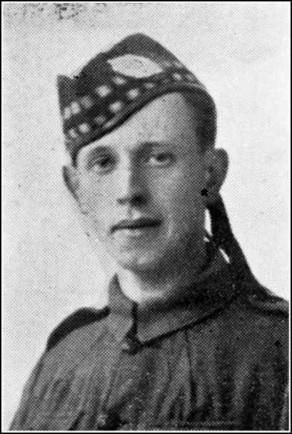
Private Thomas CORK
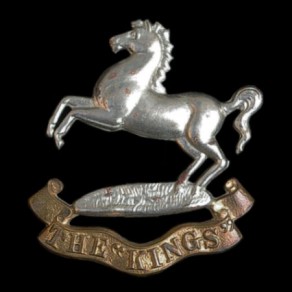
Regiment / Corps / Service Badge: King’s (Liverpool Regiment)

Divisional Sign / Service Insignia: 3rd Division
Data from Soldiers Died in the Great War 1914 - 1919 Records
Soldiers Died Data for Soldier Records
Surname: CORK
Forename(s): Thomas
Born: Skipton, Yorks
Residence: Liverpool
Enlisted: Liverpool
Number: 357331
Rank: Private
Regiment: King's (Liverpool Regiment)
Battalion: 10th Battalion
Decorations:
Died Date: 17/07/17 [sic]
Died How: Killed in action
Theatre of War: France & Flanders
Notes:
Data from Commonwealth War Graves Commission Records
CWGC Data for Soldier Records
Surname: CORK
Forename(s): Thomas
Country of Service: United Kingdom
Service Number: 357331
Rank: Private
Regiment: The King's (Liverpool Regiment)
Unit: 10th Bn.
Age: 24
Awards:
Died Date: 16/08/1916
Additional Information: Son of Fred Cork, of 91, Gargrave Rd., Skipton, Yorks.
View Additional Text
View Additional Text For Soldier Records
War Diary of the 13th (Service ) Battalion King’s (Liverpool Regiment)
14 AUGUST 1916
In Bivouacs at SANDPITS.
6 p.m. Left SANDPITS for trenches arrived 1 a.m. 15.8.16.
16 AUGUST 1916
5.30 p.m. Made attack on German Lines S. of GUILLEMONT. Casualties heavy.
THE HISTORY OF THE KING’S REGIMENT (LIVERPOOL) 1914-1919 VOL. II 1916—1917 by Everard Wyrall
13th Battalion
16 August 1916
“The attack,” stated Major C. H. Seton, commanding the 13th King’s, “was ordered for 5.40 p.m. on the 16th inst., and my order for attack was ‘A’ and ‘B’ Companies in first and second lines, ‘C’ and ‘D’ Companies in support, third and fourth lines, and in this formation they advanced over the parapet. ‘A’ Companies line of advance (on the left) was 4.9 (T.25.c.4.9), ‘B’ Company’s line of advance was Lonely Trench. They had instructions to keep touch with each other and also with those on the flanks and to advance as far as possible in a general line and to be very careful to afford mutual support wherever required; ‘C’ and ‘D’ Companies (in support) received similar orders.”
At “Zero” hour the battalion held the following positions: “B” Company was in Assembly Trench with “C” Company in rear in Edward Trench; ”A” was in “T” Trench with “D” Company in Harrison Trench. “A” and “B” Companies had been ordered to go forward in half companies, the remaining half companies following at from sixty to eighty yards distance.
The attack was launched punctually at 5.40 p.m., and once again into the inferno the King’s men went. The Battalion Diary gives no details of the attack, the only entry therein on 16th August being, “Made attack on German lines south of Guillemont. Casualties heavy.” But there is a report of the operations, written by the C.O.—Major Seton—with the 9th Brigade Diary, and it is given in full as no paraphrase could possibly catch the spirit or atmosphere of a contemporary narrative:
“The attack itself was well planned, but unfortunately our artillery fire (although extremely intense) was not evidently directed on the correct places, for as soon as the men rose over the parapets of their trenches they were met by murderous machine-gun fire from the flanks and front, which was quite impossible to get through, with the result that practically no progress could be made and the casualties were extremely heavy. My men faced the position most gallantly (as the casualty figures show) but their task was impossible, and although the supports bravely backed the first line up it was useless and impossible to advance, and they had to fall back into their original front line, where they remained until relieved by the West Yorks. On the 17th inst., when the battalion occupied the Swanson and Maltz Horn trenches. I forgot to mention that on the 17th our first-line trenches were heavily shelled by our own artillery, which, I am sorry to say, caused forty casualties in the battalion. We also received messages on the 16th that shells were falling in our support trenches. We held the communication trenches before-mentioned till relieved by the 2nd Royal Scots at 2.00 p.m. on the 18th inst., when we moved to Talus Boise and there went into bivouacs for the night and moved on into trenches near Carnoy on the 19th morning and remained until relieved the same evening, when we moved to the Citadel for the night of the 19th. On the morning of the 21st we moved to Vill-sur-Ancre, where we are at present.”*
Major Seton’s remarks concerning the inaccuracy of the artillery-fire must be read in conjunction with other notes by the same officer on the reasons of failure—the lack of adequate time for thorough reconnaissance. The gunners were just as unacquainted with the enemy’s exact dispositions as were the infantry, and it is possible that Lonely Trench could not be properly observed by the artillery observing officers. Had several days been given to the 3rd Division in which to make thorough preparations for the attack, the result might have been far different. . . .”
*The losses of the 13th King’s in the attack on 16th are given in the appendices to the 9th Brigade Diary as: 6 officers and 95 other ranks killed, 4 officers and 251 other ranks wounded and 33 other ranks missing—a total of 10 officers and 379 other ranks. The names of the officers killed are not given.
England & Wales, National Probate Calendar (Index of Wills and Administrations), 1858-1966
1935
CORK Frederick of Woodview Gargrave-road Skipton Yorkshire died 2 August 1935 Probate London 6 September to Edith Maude Whitehead widow William Trueman Cork hairdresser and Arthur Smith estate agent. Effects £5936 12s.9d.
View Additional Image(s)
Additional Photo(s) For Soldier Records
View Craven Herald Articles
View Craven Herald Articles

17 November 1916
UNKNOWN FATE OF THREE SKIPTONIANS – A TRAGIC STORY: Pte. T. Cork Believed to Have Been Killed
Another Skipton soldier, about whom no definite official news can be obtained, is Private Tom Cork, the oldest of the three soldier sons of Mr. F. Cork, hairdresser, Sheep Street. News from other sources, however, does not give much hope, and the utmost sympathy is felt by a large circle of friends for Mr. Cork and his family. The information which has been received by Mr. Cork concerning his son makes up one of the many tragic stories which the War has produced.
Sometime in August, apparently about the middle of the month, a signaller in the Royal Welsh Fusiliers noticed a pocket wallet by the side of a dead soldier. In the hope of forwarding it to the relatives of the man he took the wallet and later sent it to an Oswestry jeweller named Rowe, whose visiting card was in the wallet, along with a number of photographs and other incidentals. Mr. Rowe was unable to recognise any of the people in the photographs, but noticing the name of Mr. Pitchforth, photographer, of Saltburn, on one of the photographs, he forwarded the wallet to the latter. Mr. Pitchforth at once identified the photograph that he had taken as that of Mr. F. Cork, of Skipton, and communicated with the latter. Subsequently Mr. Cork obtained the wallet from Mr. Rowe and recognised it as that of his son Tom. He was also able to recognise the contents. He wrote to the soldier who had picked up the wallet and the latter replied to the effect that he had no doubt that the man who held the wallet was the owner.
Accompanying the wallet when it was sent to Mr. Rowe was the following touching letter written by the soldier who picked it up:– “I came across this little pocket wallet by the side of one of our fallen heroes on the battlefield. I cannot find any address enclosed only Mr. Rowe’s card, so I am sending it on to him in the hope of it reaching its proper quarters. I daresay by this time you have been informed from the right source. May I add my deepest sympathy to you? I think that this little pocket wallet he (the owner) kept through all his entire duties to the bitter end will still be kept by the ones he loved so well.”
After receiving the wallet Mr. Cork communicated with the Territorial Force Records Office and the War Office, and from the former received word that his son was still at a place not stated, suffering from wounds reported on August 18th, while the War Office’s report stated that Pte. Cork was reported wounded and missing.
Twenty-four years of age, Pte. Cork was apprenticed to the printing trade with Messrs. Edmondson and Co., Skipton, and after finishing his apprenticeship he obtained a position with a Middlesbrough firm of printers. Subsequently he entered the employ of a Liverpool firm. He enlisted at Liverpool in the King’s Own Liverpool Scottish, and went out to the Front in July last. He did part of his training at Oswestry, and Mr. Rowe, to whom the pocket wallet was first sent, said that he saw him on at least one occasion in his shop. Mr. Rowe had taken a great deal of trouble to solve the mystery, and his kind and sympathetic letter has been greatly appreciated by Mr. Cork.
Two other sons of Mr. Cork are also at the Front – Pte. John Cork, who is with the Duke of Wellington’s Regiment, and Signaller W. Cork, who is with the King’s Royal Rifles.
27 July 1917
CORK – Previously reported missing since August 16th 1916, now officially reported killed in action on that date, Private Thomas Cork, 10th Liverpool Scottish Regiment, eldest son of Mr. Fred Cork, hairdresser and tobacconist, Sheep Street, Skipton.
27 July 1917
THE LATE PTE. T. CORK, SKIPTON
Mr. F. Cork, hairdresser, Sheep Street, Skipton, has received an official intimation this week that the Army Council now conclude that his oldest son, Pte. Thomas Cork, was killed on August 16th 1916, or since. The information which Mr. Cork originally received concerning his son makes up a very tragic story. About the middle of August last year, a signaller in the Royal Welsh Fusiliers noticed a pocket wallet by the side of a dead soldier. In the hope of forwarding it to the relatives of the man he took the wallet and later sent it to an Oswestry jeweller named Rowe, whose visiting card, along with a number of photographs, he found in the wallet. Mr. Rowe was unable to recognise any of the people on the photographs, but noticing the name of Mr. Pitchforth, photographer, of Saltburn, on one of the photographs, he forwarded the wallet to the latter. Mr. Pitchforth identified the photograph that he had taken as that of Mr. F. Cork, of Skipton, and communicated with the latter who obtained the wallet from Mr. Rowe and recognised it as that belonging to his son Thomas. Subsequently, Mr. Cork communicated with the military authorities, but he could receive no definite information before this week.
Deceased was 24 years of age, and was apprenticed to the printing trade with Messrs. Edmondson and Co., Skipton. After finishing his apprenticeship he worked for a Middlesbrough firm of printers, and afterwards entered the employ of a Liverpool firm. He enlisted at Liverpool in the King’s Own Liverpool Scottish, and went to the Front in July 1916.
24 August 1917
SKIPTON TRADESMAN’S SECOND BEREAVEMENT – LANCE CORPORAL JOHN CORK
We regret to announce that Mr. Fred Cork, tobacconist, &c., Sheep Street, Skipton, has had another son – Lance Corporal John Cork – of the Duke of Wellington’s West Riding Regiment killed in action. Twenty-four years of age, he enlisted in January 1916 and went out to France in June of the same year. He was wounded in the head, shoulder, and thigh on the 5th of January last, and on his recovery, after a month at the Bristol Hospital, he returned to France. He was for many years a member of the Gargrave Road Primitive Methodist Church Choir. He served his apprenticeship with Mr. Walter Shuttleworth, grocer, Keighley Road, Skipton, and prior to enlisting was in the employ of Mr. Carr, grocer, Skipton.
Second-Lieut. V. F. de W. W. Vredenburg, in a letter to Lance Corporal Cork’s sister, states:– “It is with deepest regret that I have to inform you of the death in action of your brother, Lance Corporal Cork. He took part in a raid on the enemy trenches on the night of August 9th, and was killed during the advance. His death was absolutely instantaneous. May I extend to you the deepest sympathy of the officers and men of his company in your grief. I looked upon him as an exceedingly capable soldier who did his duty at all times uncomplainingly and well.”
Mr. Cork had another son – Private Tom Cork – killed in action in August, 1916; and he has also another son – Rifleman Willie Cork – serving with the King’s Royal Rifles in France.
Deep sympathy is felt with Mr. and Mrs. Cork and family in this their second loss.
View West Yorkshire Pioneer Articles
View West Yorkshire Pioneer Articles

17 November 1916
SKIPTON SOLDIER BELIEVED KILLED
Pte. Tom Cork (24), son of Mr. Fred Cork, hairdresser, Sheep Street, Skipton, is believed to have been killed in action.
Pte. Cork served his apprenticeship to the printing trade with Messrs. Edmondson and Co., High Street, Skipton, on the completion of which he went to Middlesbrough and then to Liverpool. Whist at Liverpool he joined the King’s Own Liverpool Scottish, and did his training at various places, including Oswestry, going out to France in July 1916. Some time ago a Signaller in the Royal Welsh Fusiliers picked up a pocket wallet laid near to a dead soldier on the battlefield. The wallet was found to contain numerous photographs, and also a visiting card bearing the name of Mr. Rowe, jeweller, of Oswestry. With a view to finding the owner, the soldier forwarded the wallet to Mr. Rowe. The latter did not recognise any of the photographs, but noticed the name of Pitchforth, Saltburn, as the photographer on one of the cards, and in turn he communicated with him. Mr. Pitchforth was able to recognise one of the photographs as that of Pte. Cork’s father, and at once communicated with him. Mr. Cork then got in touch with Mr. Rowe, from whom he obtained the wallet which he at once recognised as belonging to his son. He then wrote to the soldier who had found it, and the soldier replied that he had no doubt that the man who held the wallet was the owner. Later Mr. Cork asked for information from the War Office, and he received a communication from the Territorial Force Records Office to the effect that Pte. Cork was ill at a place not stated, suffering from wounds reported on the 18th of August, while the War Office also reported him as wounded and missing. When the wallet was picked up by the Welsh Fusilier, he wrote the following letter to the parents to whom the wallet belonged:– “I came across this little pocket wallet by the side of one of our fallen heroes on the battlefield. I could not find any address enclosed, only Mr. Rowe’s card, so I am sending it on to him in the hope of it reaching its proper quarters. I dare say by this time you have been informed through the right source. I send my deepest sympathy to you, and I think this little pocket wallet he kept through the untiring duties to the bitter end will still be kept by the ones he loved so well.” The kindness of Mr. Rowe in doing all he could to find the owner of the wallet has been greatly appreciated by Mr. Cork and his family. They have two other sons serving, Pte. John Cork, with the Duke of Wellington’s, and Signaller W. Cork, with the Royal Rifles, and both are in France. Pte. Cork was a local preacher in connection with the Primitive Methodist denomination.
27 July 1917
CORK – Previously reported missing since August l6th, 1916, now officially reported killed in action on that date, Pte. Thomas Cork, l0th Liverpool Scottish Regiment, eldest son of Mr. Fred Cork, hairdresser and tobacconist, Sheep Street, Skipton.
27 July 1917
SKIPTON
PRIVATE TOM CORK OFFICIALLY REPORTED KILLED
Mr. Fred Cork, hairdresser, Sheep Street, received official information on Tuesday morning from the Territorial Record Office, Preston, to the effect that his son, Pte. Tom Cork, of the King’s Own Liverpool Scottish, who had previously been reported missing, was killed on August 16th 1916, or since.
Some time ago a Signaller in the Royal Welsh Fusiliers picked up a pocket wallet laid near to a dead soldier on the battlefield. The wallet was found to contain numerous photographs and also a visiting card bearing the name of Mr. Rowe, jeweller, of Oswestry. With a view to finding the owners the soldier forwarded the wallet to Mr. Rowe. The latter did not recognise any of the photographs, but noticed the name of Pitchforth, Saltburn, as the photographer on one of the cars and in turn he communicated with him. Mr. Pitchford was able to recognise one of the photographs as that of Pte. Cork’s father, and at once communicated with him. Mr. Cork then got in touch with Mr. Rowe, from whom he obtained the wallet which he at once recognised as belonging to his son. He then wrote to the soldier who found it and the soldier replied that he had no doubt that the man who held the wallet was the owner. Later Mr. Cork asked for information from the War Office, and he received a communication from the Territorial Force Record Office to the effect that Pte. Cork was ill at a place not stated, suffering from wounds reported on the 16th of August, while the War Office reported him as wounded and missing. When the wallet was picked up by the Welsh Fusilier he wrote the following letter to the parents to whom the wallet belonged:– “I came across this little pocket wallet by the side of one of our fallen heroes on the battlefield. I could not find any address enclosed, only Mr. Rowe’s card, so I am sending it to him in the hope of it reaching its proper quarters. I dare say by this time you have been informed through the right source. I send my deepest sympathy to you, and I think this little pocket wallet to be kept through the untiring duties to the bitter end will be still kept by the ones he loved so well.” The kindness of Mr. Rowe in doing all he could to find the owner of the wallet has been greatly appreciated by Mr. Cork and his family.
Pte. Cork served his apprenticeship to the printing trade with Messrs. Edmondson and Co, High Street, Skipton, on the completion of which he went to Middlesbrough and then to Liverpool. Whilst at Liverpool he joined the King’s Own Liverpool Scottish, and did his training at various places including Oswestry, going out to France in July, 1916.
Mr. Cork has two other sons serving, Pte. John Cork with the Duke of Wellington’s, and Signaller W. Cork with the Royal Rifles, and both are in France. Pte. Cork was a local preacher in connection with the Primitive Methodist denomination.
24 August 1917
MORE SKIPTON SOLDIERS KILLED
Lance-Corporal J. Cork
We regret to announce that Mr. Fred Cork, hairdresser, Sheep Street, Street, Skipton, has had another son – Lance-Corporal John Cork, of the Duke of Wellington’s West Riding Regiment – killed in action. Twenty-four years of age, he enlisted in January, 1916, and went out to France in June of the same year. He was wounded in the head, shoulder, and thigh on the 5th of January last, and on his recovery after a month at the Bristol Hospital, he returned to France. He was formerly a member of the Gargrave Road Primitive Methodist Church choir. He served his apprenticeship with Mr. Walter Shuttleworth, grocer, Keighley Road, Skipton, and prior to enlisting was in the employ of Messrs. G. E. Carr and Co., Ltd., grocers, Skipton.
Second-Lieutenant V. F. de W. W. Vredenburg, in a letter to Lance-Corporal Cork’s sister, states:– “1t is with deepest regret that I have to inform you of the death in action of your brother, Lance-Corporal Cork. He took part in a raid on the enemy trenches on the night of August 9th, and was killed during the advance. His death was absolutely instantaneous. May I extend to you my deepest sympathy of the officers and men of his company in your grief. I looked upon him as an exceedingly capable soldier who did his duty at all times uncomplainingly and well.”
Mr. Cork had another son – Pte. Tom Cork – killed in action in August, 1916, while he has also another son, Rifleman Willie Cork, serving with the King’s Royal Rifles in France. Much sympathy is felt with Mr. and Mrs. Cork and family in this their second loss.
31 May 1918
CRAVEN AND THE WAR
Skipton Prisoner of War
Pte. Willie Cork, of the King’s Royal Rifles, son of Mr. Fred Cork, hairdresser, Sheep Street, Skipton who has been reported missing since April 13th, is a prisoner of war in Germany. Pte. Cork, who is 21 years of age, enlisted when 19, and was formerly employed by his father. A brother, Pte. Tom Cork, of the King’s Liverpool Scottish Regiment, has been previously presumed killed after being missing, while another brother, Pte. John Cork, of the West Riding Regiment, has also been killed in action.
Comment on this Soldier Record
You can leave comments on this soldier record. Please note all comments will be manually approved before they appear on the website.

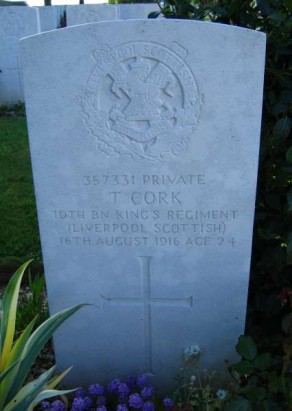
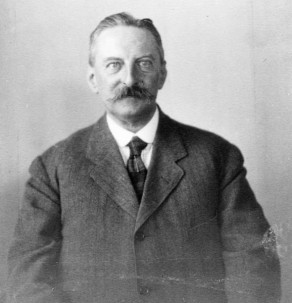
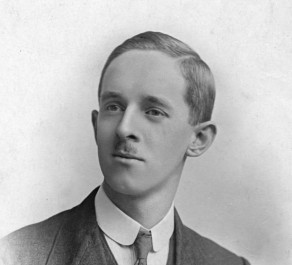



No comments yet.